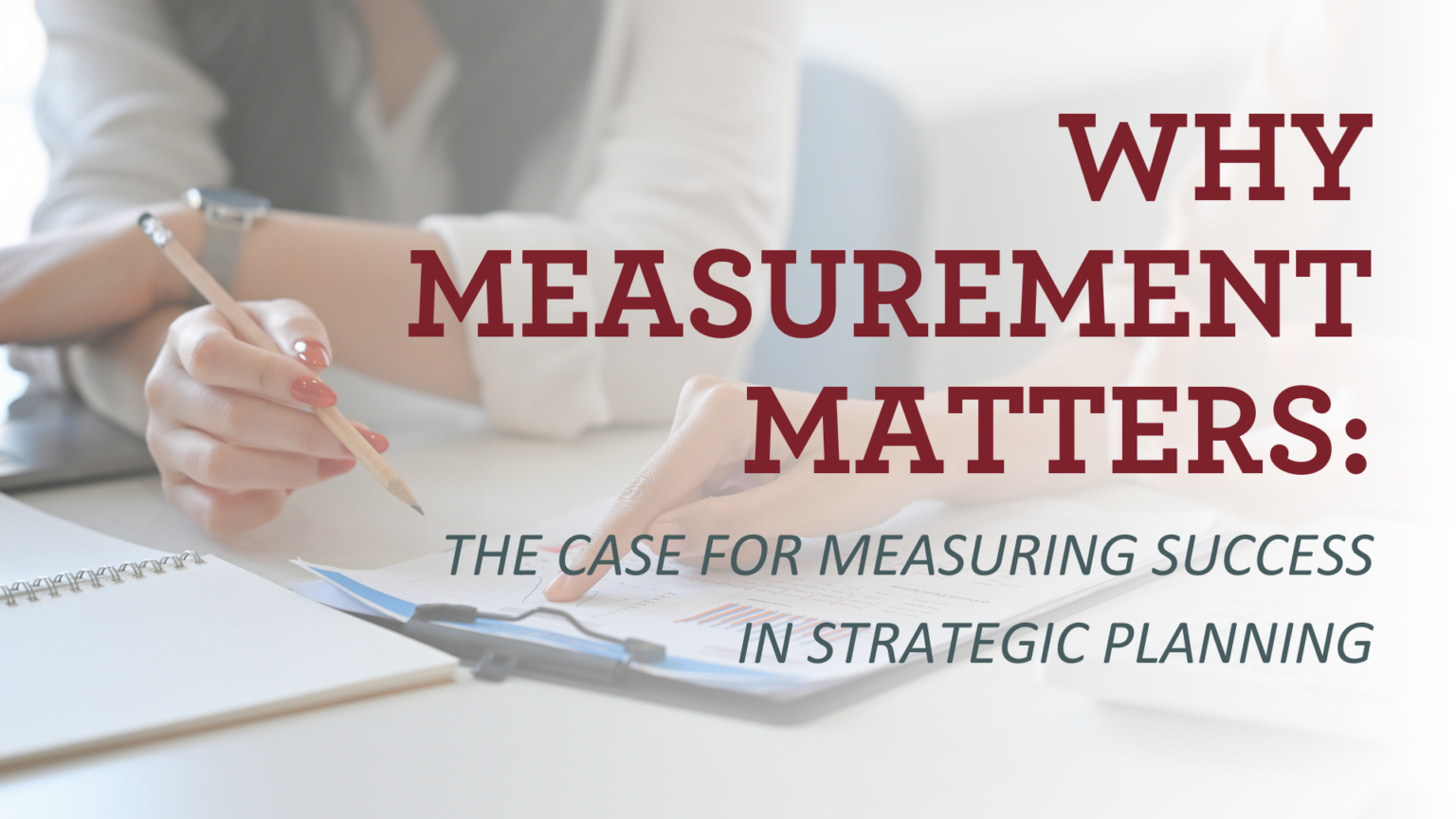Kaitlyn Kendall-Sperry
Senior Consultant
Your plan is only as good as your ability to measure it. Dreams are beautiful, but they are only good intentions. Good intentions, without clearly defining success is a recipe for mediocrity. So, what’s the solution? Measures of success.
Measures align expectations.
We agreed that “improving our culture” would be part of our strategic plan. When we reached the end of the first year, the staff thought the objective was doing well while the board thought it was failing. We weren’t on the same page.
The most important measures are the ones paired with subjective outcomes—things like culture change or engagement. These are transformational objectives, but they often lack a single definition of success that everyone agrees on. How do you decide what to do if you don’t know what success is? It’s like asking your team to take a trip without a destination. It’s easy to measure revenue, but difficult to measure culture. It falls on each organization to create their own objective measure (and alignment) through shared subjectivity between stakeholders.
Measures tell you what to do (and what not to do).
How do we know what to measure if we don’t know what we’re going to do?
Some organizations struggle to define their measures of success first. They know the work they want to do but haven’t articulated why it’s the “right” work. This isn’t surprising or uncommon. You and your team may have faced similar challenges before and the projects you are considering helped resolve it in that case. These might be the right projects—but before you fully commit, ask yourself why? (or sometimes so what?) a few times to identify the measures or outcomes you are really looking for. You may find that as you ask the questions, people’s whys (and expected outcomes) are different.
Potential Project > Create professional development plans for all team members.
Why? > Professional development plans are best practice.
Why? > They help staff grow and see a path forward for themselves here.
So what? > If they’re satisfied, they’ll be better engaged.
So what? If they’re better engaged, they’ll stay here longer, and we will have a better retention rate.
We need to do this project, but it doesn’t move the needle on any of our measures.
When a potential project doesn’t connect to the outcomes described in your plan, then you either need to rethink your plan or rethink the project.
Measures remind you to ask questions.
We did everything in the plan but we’re still not where we want to be. What happened?
If you begin implementing your plan and your measures aren’t moving, you should (1) re-evaluate your measures, (2) re-evaluate your projects, and/or (3) re-evaluate your timeline.
Start with your timeline—perhaps the results of your work are taking longer than you expected. Don’t throw out good work simply because it isn’t moving as fast as you wanted.
If the timeline checks out, move on to your project. Is there something wrong with the project implementation that is changing the outcomes? Or is the project not giving you the results you expected? Consider changing project implementation or the project itself.
If your timeline and your projects are good, then take a look at your measures. There is a chance that when you decided your measures at the start of the planning process, you did not identify the right one. Go back to your whys and so whats to pull apart your thought process and find a new measure.
Thinking about strategic planning? So are we. All the time. Give us a call at 614-437-3000 or reach out to [email protected] to learn more about our services.





